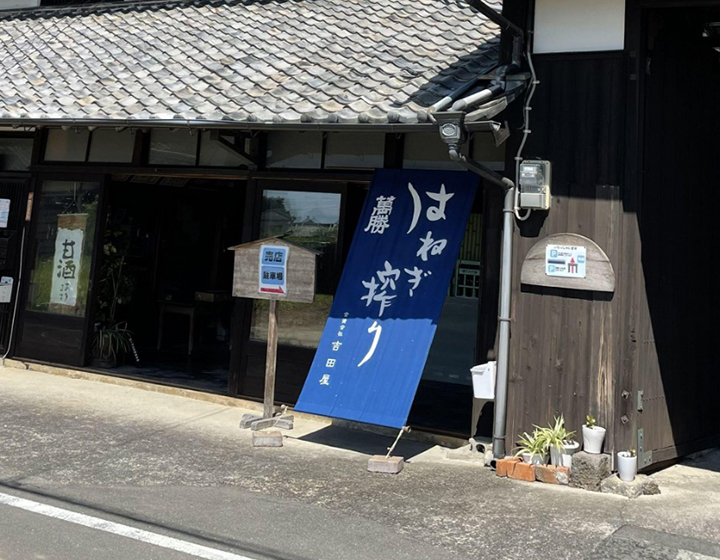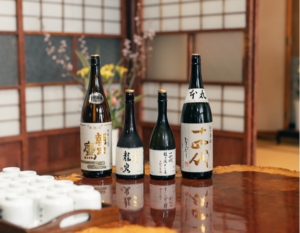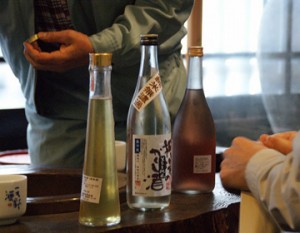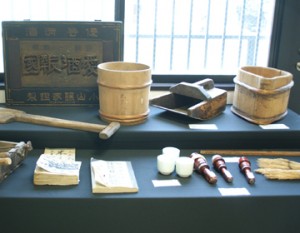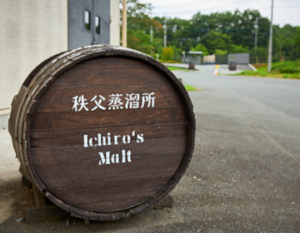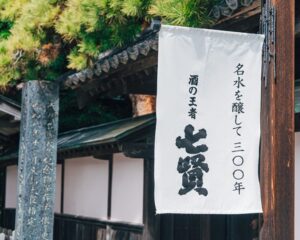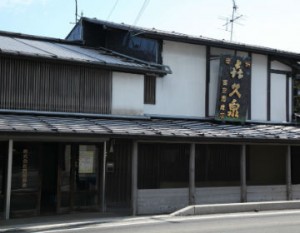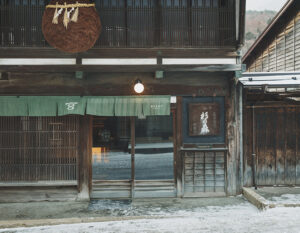There is a brewery in Nagasaki that makes sake using the ” Hanegi Shibori” method, which is extremely rare in Japan. The process involves hard labor and is difficult to mass produce, and today there are only a few remaining in Japan. We visited a sake brewery that continues to experiment with the use of ” flower yeast” isolated from flowers in nature, in addition to the “spring wood pressing” method, in order to enhance its unique brand power.
Sake brewing rarely seen in Japan
Minamishimabara City, Nagasaki Prefecture. Yoshidaya, a sake brewery located in Arike-machi, where breweries of soy sauce and miso still remain, has been making sake the old-fashioned way: by using a giant 8-meter-long tree with a weight hanging from it and applying pressure to the unrefined sake using the principle of leverage, the sake is squeezed out by “hitenoki shibori,” a method that is not only labor-intensive but also very expensive. In addition to being very labor-intensive, this method is now rarely seen in Japan, with only about five breweries remaining in the country, as modernization has led many breweries to introduce mechanical presses. Unlike machine pressing, this method produces a very mild and full flavor, and sake made by this method is now rare and precious.
Yoshidaya was founded in 1917. Originally, Yoshidaya was a long-established sake brewery that made sake using the “repellent wood pressing” method, but as time went by, they shifted to machine pressing in the 1970s. By 1984, when the current brewery owner,Yoshiaki Yoshida, returned to Nagasaki after studying brewing at a university in Tokyo, the brewery was producing and selling only a small amount of regular sake, which was well known locally.

The wooden press has been revived again after mechanization.
As the successor to a nearly century-old sake brewery, young Yoshiaki, with high aspirations and a renewed interest in sake brewing, began again to produce so-called “high-end” sake such asginjo-shu andjunmai-shu that meet the requirements for rice polishing ratio and ingredients. However, it was difficult to produce such sake with the facilities of the time, which had minimized the number of production lines, and it was a daily process of repeated trial and error.
Then, Mr. Yoshiaki turned his attention to a piece of wood that had been left untouched in the brewery. The tools were still there, so I decided to take the plunge,” he said. However, there were no personnel who could properly make sake using the wooden press, which he had long since moved away from. After much research based on the records left behind at the brewery and the few memories of the brewers, the wooden press was finally revived in 1997. It had been 13 years since Yoshiaki returned to Nagasaki.
Heavy Labor and All Manual Work
In the “repellent wood pressing” process, bags of unrefined sake are piled in a wooden frame called a “ fune,” and pillows are stacked high on top of the bags. Once the top layer is placed on the top and weights are placed on top, the sake is slowly pressed out by the natural weight of the sake without applying any undue pressure. Although it cannot be mass-produced, the sake is not completely ” squeezed ” like a machine, which removes any residual flavor and gives the sake a clean, gentle taste.
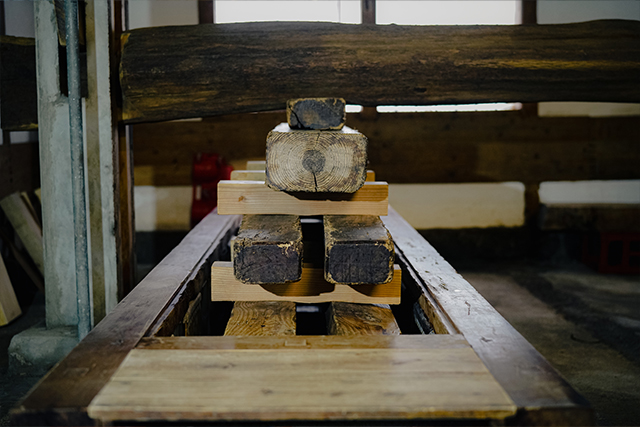
On the other hand, the process requires an extraordinary amount of labor. The tank is so large and deep that the brewer’s upper body is upside down as he piles in the sake bags. Sometimes it takes two people to load the bags, with the other brewer holding the bags in both hands and supporting the legs to prevent them from falling off the head. If there is too much unrefined sake, or if the bags are not stacked properly, the pressure will not be applied properly and the bags may tear, so everything is done by hand, relying on long years of experience and sense.
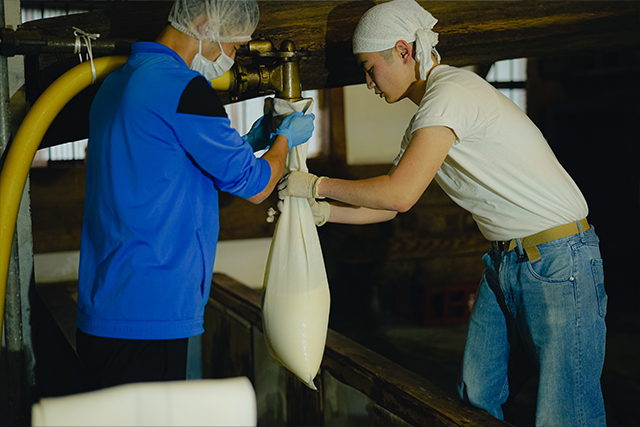
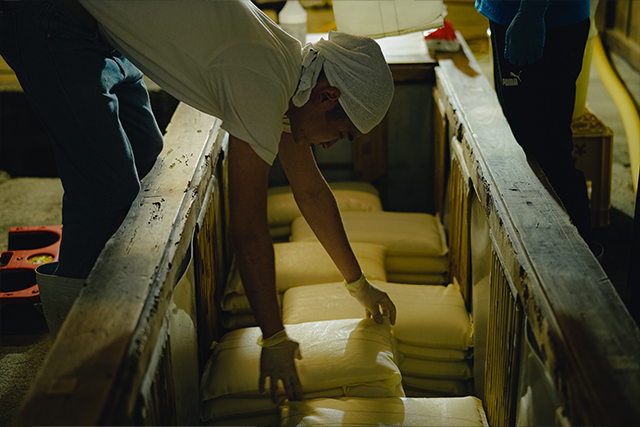
Sparing no effort and putting in a lot of time and effort
Both the placing of the sleepers and the operation of the amida wheel, which moves the 8-meter-long repellent, are done by hand. Once the wood is placed on the sleeper, the final step is to hang the 60 heavy weights one by one from the roof. The weight of each weight is 16 to 18 kilograms. Each one weighs 16 to 18 kilograms, or about one ton.
Filling, labeling, and shipping are all done by hand. It is precisely because of the careful, meticulous, and painstaking effort that goes into each step of the process that the sake has a more than profound flavor.
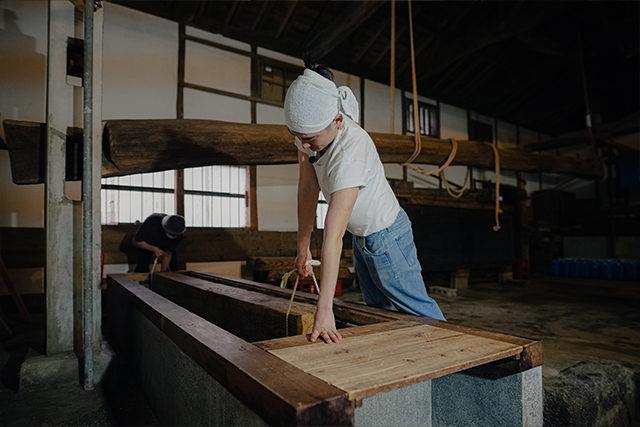
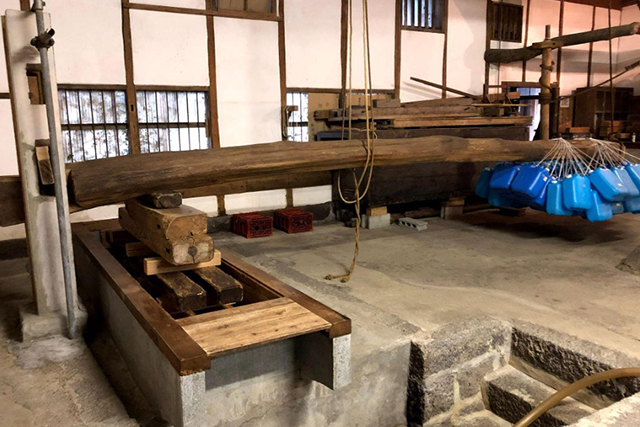
Another special feature of “flower yeast
Yeast is one of the ingredients that greatly affects the taste of sake. Since different types of yeastproduce different aromas and flavors, the choice of yeast is an important factor in sake brewing. Typical yeasts include ” Kyokai Yeast ” and ” Prefecture Yeast “.
Yoshidaya uses a type of yeast called ” hana-yeast,” which is a natural sake yeast that exists in nature and is neither of these. Yeast exists everywhere in nature, but it is especially abundant in flowers and fruits. The ” Flower Yeast Research Group ” of the Tokyo University of Agriculture, which has focused its attention on this issue, has succeeded in isolating yeast from flowers for the first time in the world. Currently, more than a dozen types of flower yeast are in practical use. Since this university is the alma mater of Mr. Yoshiaki, he has had the opportunity to use flower yeast from the time of its development.
When one hears the term “flower yeast,” the image of a strong and gorgeous aroma comes to mind, but Kamiaki says, “Rather than being aromatic, the appeal of flower yeast is the wide range of flavors it offers. I change the brewing method according to the yeast, asking myself, “What flavor will this yeast give me? We are constantly researching, trying to find out what kind of flavor this yeast will produce, and changing the brewing process to match the yeast,” he says.
Different types of flowers have different fermentation characteristics.
The “Hanegi-shibori Junmai Ginjo-shu” using nadeshiko yeast has a gorgeous aroma and a dry, yet moist sweet taste that spreads in the mouth.
Junmai Daiginjyo Seisen Seisen Seijo Nagare (Junmai Daiginjyo Seisen Sekijo Nagare),” popular for its sweet and fruity aroma like a fruit wine, uses abelia yeast. It is a confident product with an elegant and smooth taste, but with a refreshing sharpness after drinking.
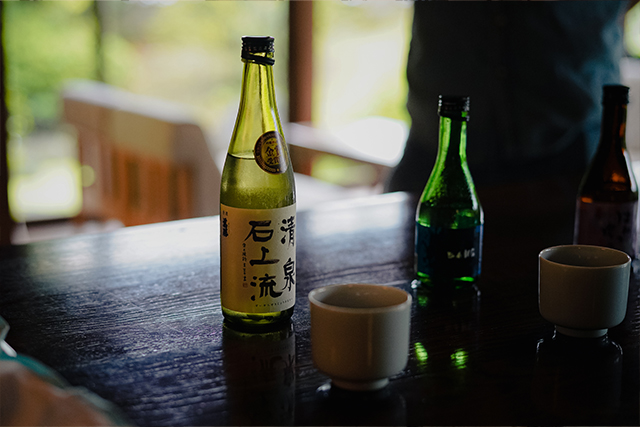
The next generation of brewers is working on a new flower yeast.
Another notable product is ” BANG,” a junmai ginjo-shu developed by his son Kaichiro (5th generation) after he returned to the brewery following his training. Although the sake has an alcohol content of 16%, it has a light flavor with a refreshing sweetness that does not give the impression of being strong. The new brand opens a new door for Yoshidaya by using oscillating banana yeast for the first time, and the name “BANG” is derived from Yoshidaya’s long-established brand name ” Bansho,” which shows the aspirations of the next generation to carry on the good old traditions.
The name “BANG” is derived from Yoshidaya’s long-established brand name “Mansho! The name “Bansho” is derived from Yoshidaya’s long-established brand name, “Mansho”. I hope you will enjoy it at various temperatures, as its expression changes dramatically with changes in temperature,” says Kaichiro.
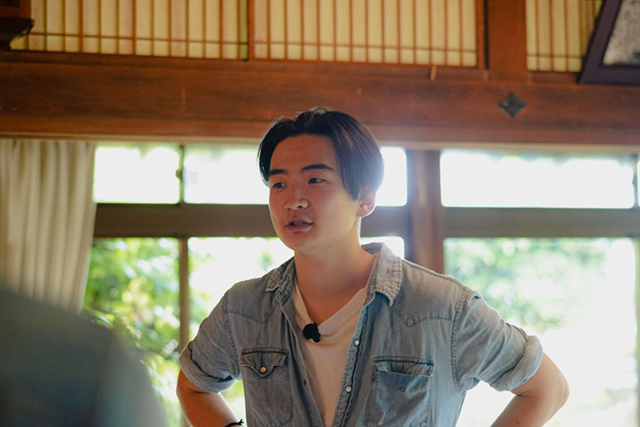
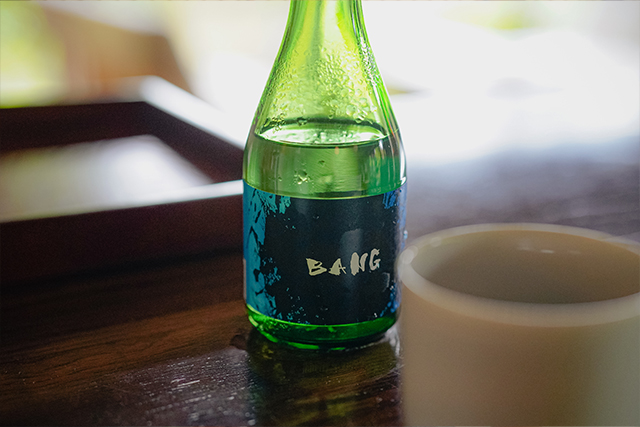
Products Other Than Sake Gaining Momentum
Other products include “Hanegi Shibori Junmai Sake” made with Tsurubara yeast, which balances sweetness, acidity, pleasant bitterness, and a full-bodied umami flavor, and ” Himawari Yeast Sake,” a special junmai sake with a refreshing summery flavor reminiscent of fresh fruit with a slight sourness. Yoshidaya uses floral yeast in all of its brands. Yoshidaya says, “There are still many new things coming out with hana-yeast, and we don’t know much about it yet. That’s why we are looking forward to it.
In addition to sake, other products such as ” Umeshu ” (plum wine) based on sake and ” Hyakunen Amazake” (sweet sake made by naturally fermenting rice malt in a bottle) are also gaining popularity. The amazake won the top prize (2018) at the “Treasures of Japan” world competition.
We want to spread Nagasaki’s sake throughout the country.
While his predecessor once steered the company toward mechanization, Yoshiaki Yoshiaki, the fourth generation, revived the old traditional method of repellent wood pressing in the modern age and pioneered his own unique line of flower yeast. The fifth generation, KAICHIRO, continues to try to incorporate new sake brewing knowledge and techniques into the brewery. Sake is made in the cold season, and it has long been believed that sake is best made in colder regions. The fact that Mr. and Mrs. Yoshida are taking no notice of this and are enthusiastic about sake brewing in Nagasaki is rather refreshing.
It is still not uncommon for people to be surprised to hear, “Sake is made in Nagasaki, too? It is still not uncommon for people to be surprised to hear, “Sake is made in Nagasaki, too! I hope that we can change these conventional values, even if only slightly, and grow into a sake brewery that is not afraid of change and can proudly present Nagasaki sake to the rest of the country,” he says with a cheerful smile as he speaks strongly about the brewery’s future. Although the brewery is small, with a current production of only 90 koku, I can see a bright future for Nagasaki sake in their persistent belief in their own particular style of sake brewing.



